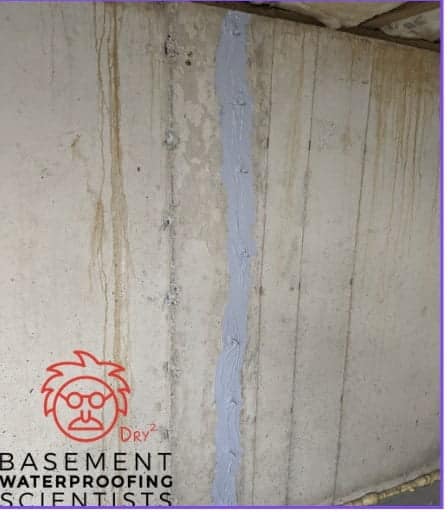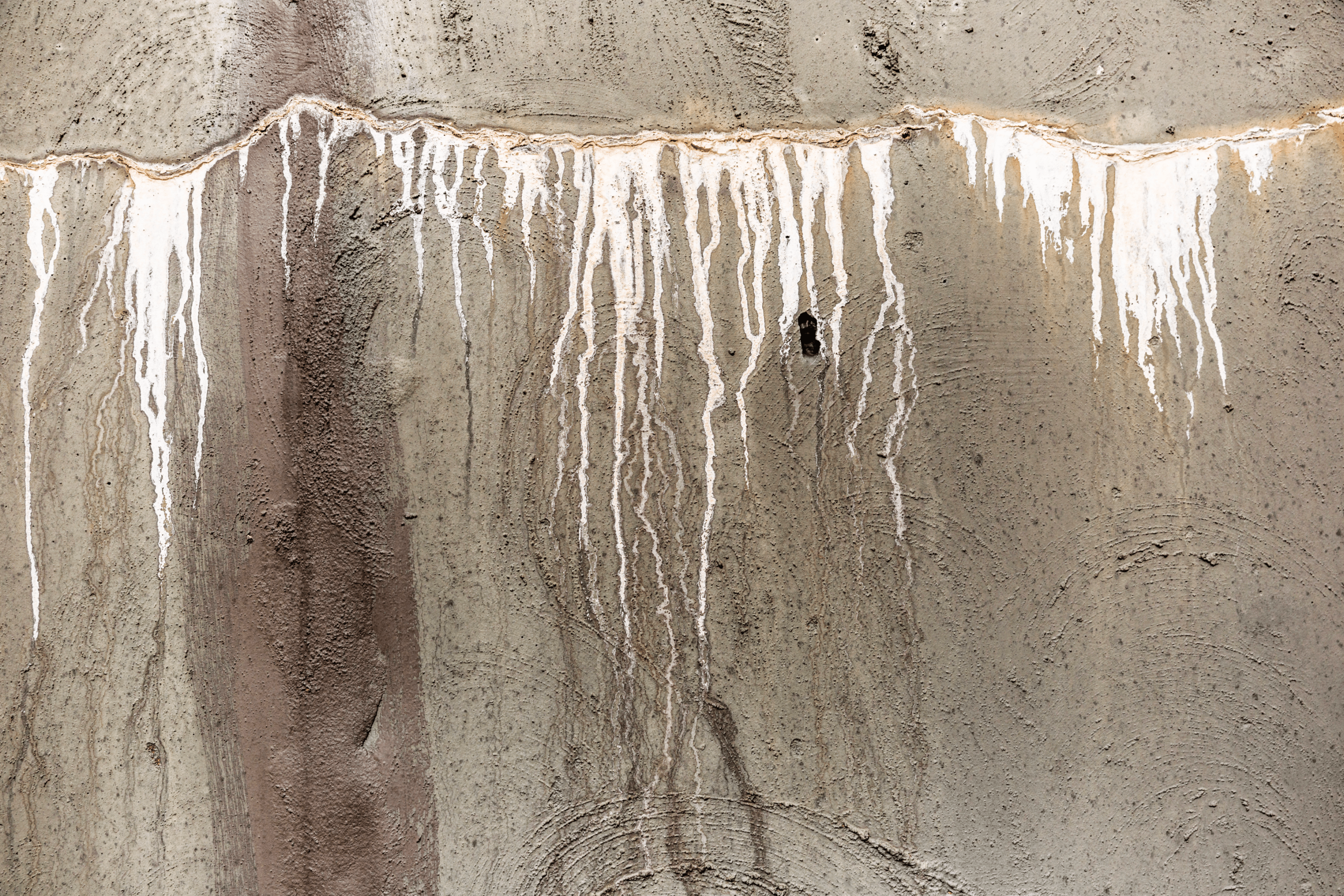Repairing Cracks in Poured Concrete Walls
Cracks in poured concrete walls are a common issue faced by many homeowners. These cracks can occur due to various factors such as the natural curing process of concrete, shrinkage, thermal expansion, and contraction, or ground settlement. Repairing these cracks is essential to maintain the structural integrity of your home and prevent water infiltration, which can lead to further damage. In this article, we will discuss the causes of cracks in poured concrete walls, the tools and materials required for repair, and provide a step-by-step guide to fixing the problem.

Click Here for a Free Estimate
Causes of Basement Wall Cracks in Poured Concrete Walls
- Concrete shrinkage: As concrete cures, it naturally shrinks, which can lead to the formation of small cracks in the basement walls.
- Thermal expansion and contraction: Changes in temperature can cause concrete to expand and contract, leading to the development of cracks.
- Ground settlement: Uneven or poorly compacted soil beneath the foundation can cause the ground to settle, resulting in structural cracks in the concrete walls.
- Hydrostatic pressure: High levels of groundwater or poor drainage can cause hydrostatic pressure to build up against the foundation walls to foundation cracks.
Tools and Materials Required for Repairing Cracks in Poured Concrete Walls
- Hammer and chisel
- Wire brush
- Shop vacuum or air compressor
- Concrete crack repair epoxy or polyurethane injection kit
- Injection ports
- Putty knife
- Trowel
How are structural cracks repaired in a poured concrete basement wall?

- Identify the crack: Before starting the repair process, it’s essential to determine the type and severity of the crack. This will help you decide on the appropriate repair method and materials required.
- Clean the crack: Use a hammer and chisel to remove any loose debris from the crack. Follow up with a wire brush to clean the crack’s surface thoroughly. Finally, use a shop vacuum or an air compressor to remove any remaining dust and debris. Drill holes for injection ports into the crack.
- Apply the epoxy or polyurethane: Select a suitable concrete crack repair epoxy or polyurethane injection kit based on the crack’s size and location. Follow the manufacturer’s instructions for mixing and preparing the repair material. In some cases hydraulic cement may be used.
- Install plastic injection ports: Along the crack, insert the injection ports at regular intervals, typically 8-12 inches apart. Secure the ports in place using the epoxy or polyurethane adhesive.
- Seal the foundation cracks: Using a putty knife, apply a thin layer of the epoxy or polyurethane adhesive over the crack, covering the injection ports. Ensure the adhesive is applied evenly and smoothly to prevent any leaks during the injection process. Allow the adhesive to cure for the time specified by the manufacturer.
- Inject the repair material: Once the adhesive has cured, inject the epoxy or polyurethane into the crack through the injection ports. Start at the lowest port and work your way up, injecting the repair material until it begins to flow out of the next port. Cap the first port and continue the process until all ports have been injected.
- Remove the injection ports from the basement wall: After the epoxy or polyurethane has cured, remove the injection ports by chiseling them off the wall.
- Finish the surface: Use a trowel to smooth out the surface of the repaired cracks in the concrete wall, blending it with the surrounding concrete.
- Monitor the repaired crack: Keep an eye on the repaired area to ensure the crack does not reappear or worsen. If the problem persists, consult a professional for further assessment and repair.
Horizontal Cracks in Concrete Foundations: Understanding the Causes and Solutions

Causes of Horizontal Cracks in Concrete Foundations
There are several factors that can contribute to the formation of horizontal cracks in concrete foundations:
Lateral soil pressure
Soil surrounding the foundation can exert significant lateral pressure, particularly in cases of expansive clay soils or high groundwater levels. When this pressure exceeds the concrete’s strength, it can result in horizontal cracks.
Freeze-thaw cycles
In colder climates like here in Philadelphia PA, freeze-thaw cycles can cause soil to expand and contract, increasing pressure on the foundation walls and leading to the development of horizontal cracks.
Poor construction techniques
Insufficient steel reinforcement, improper concrete mix, or inadequate curing can weaken the foundation, making it more susceptible to cracking under lateral pressure.
Ground settlement
Uneven or poorly compacted soil beneath the foundation can cause the ground to settle, resulting in horizontal cracks in the foundation walls.
Consequences of Horizontal Cracks in Concrete Foundations
If horizontal cracks in concrete foundations are not addressed promptly, they can lead to several significant issues, including:
- Structural damage: Horizontal cracks can compromise the structural integrity of the foundation, leading to further cracking, bowing, or even collapse.
- Water infiltration: Horizontal cracks can allow water to seep into the basement, leading to moisture issues, mold growth, and damage to belongings stored in the basement.
- Pest intrusion: Cracks in the foundation can provide entry points for pests, such as rodents and insects, which can cause damage and pose health risks.
- Decreased property value: Unaddressed foundation issues can significantly impact the resale value of your home, as potential buyers may be deterred by the potential costs and risks associated with repairing the foundation.
Repair Methods for Horizontal Cracks in Concrete Foundations
Several repair methods can be employed to address horizontal cracks in concrete foundations, including:
Wall anchors
Wall anchors are a popular method for stabilizing foundation walls with horizontal cracks. These anchors consist of metal plates installed on the interior and exterior sides of the wall, connected by steel rods. The anchors are tightened gradually to pull the wall back into its original position and provide lateral support.
Carbon fiber straps
Carbon fiber straps can be used to reinforce and stabilize foundation walls with horizontal cracks. These strong, lightweight straps are bonded to the interior surface of the wall, helping to distribute the lateral pressure and prevent further cracking.
Helical tiebacks
Helical tiebacks are a type of anchor system that is installed horizontally into the soil adjacent to the foundation wall. These tiebacks help provide lateral support to the wall, reducing the risk of further cracking or bowing.
Underpinning
n cases where ground settlement is the primary cause of horizontal cracking, underpinning may be necessary. This process involves strengthening the existing foundation by installing additional support, such as piers or piles, beneath the structure.
Horizontal Foundation Cracks
Horizontal cracks in concrete foundations pose a significant risk to the structural integrity of your home and should be addressed as soon as possible. Understanding the causes of these cracks and the available repair methods can help homeowners take appropriate action to maintain the stability and safety of their homes. Call Basement Waterproofing Scientists today to get a free inspection and estimate to repair cracks. Fixing foundation cracks is important to maintain the load bearing capability of the basement walls.

Get a Free Estimate !
Frequently Asked Questions
Why Are My Basement Walls Bowing?
Your content goes here. Edit or remove this text inline or in the module Content settings. You can also style every aspect of this content in the module Design settings and even apply custom CSS to this text in the module Advanced settings.
Is Mold Dangerous in a Basement or Crawl Space?
Your content goes here. Edit or remove this text inline or in the module Content settings. You can also style every aspect of this content in the module Design settings and even apply custom CSS to this text in the module Advanced settings.
Why is my Basement Damp?
Your content goes here. Edit or remove this text inline or in the module Content settings. You can also style every aspect of this content in the module Design settings and even apply custom CSS to this text in the module Advanced settings.
Who provides basement wall crack repair services in Pennsylvania?
We are Basement Waterproofing Scientists, offering professional basement wall crack repair services across Pennsylvania. We specialize in repairing cracks in basement walls using industry-leading methods to ensure deep structural sealing and long-term integrity. Whether you need epoxy crack injection or polyurethane crack repair, our team delivers reliable solutions tailored to each home’s unique needs, backed by years of expertise.
How can I schedule basement wall crack repair services online?
Scheduling basement wall crack repair is simple. Visit our website’s basement wall crack repair page and complete the contact form. One of our team members will promptly follow up to set up your free inspection and estimate. We strive for clear communication and convenient scheduling that respects your time and property needs.
What causes cracks in basement walls?
Cracks in basement walls often result from structural stress due to hydrostatic pressure, soil movement, or settling foundation conditions. Temperature fluctuations can also contribute to crack formation. Our team evaluates the underlying cause of each crack so we can deliver the best approach—whether that’s structural crack sealing, epoxy injection, or polyurethane methods.
How are basement wall cracks repaired?
We use advanced techniques such as epoxy crack injection for strong structural repairs and polyurethane crack repair for flexible, watertight sealing. Epoxy is favored for static or structural cracks, while polyurethane expands to fill active leaks. We select the best method based on crack type and your home’s needs to achieve effective, long-lasting results.
How long does basement wall crack repair take?
Most repairs can be completed within a few hours to a full day, depending on crack size and method chosen. Our team performs a detailed inspection, then provides an accurate timeline prior to beginning work so you know what to expect well in advance.
Is basement wall crack repair covered by homeowners insurance?
Coverage typically depends on your insurance policy. Preventative repairs or settling-related cracks may not be covered, though sudden, unexpected damage sometimes is. We encourage homeowners to consult their insurance provider for clarity regarding coverage details.
Can basement wall crack repair prevent water leaks?
Yes. Properly sealing cracks—especially with expanding polyurethane or structural epoxy—prevents moisture from seeping into your basement. This helps preserve the integrity of your space and reduces risks related to mold or water-related damage.
How do I hire the right contractor for basement wall crack repair in Pennsylvania?
We’re expert basement wall crack repair contractors in Pennsylvania, providing tested methods and transparent service. When choosing a contractor, look for experience, detailed written estimates, and reliable warranties. That’s exactly what we deliver: trustworthy guidance, high-quality workmanship, and support you can count on.
Can I repair basement wall cracks myself?
DIY kits may offer a temporary fix, but they seldom address deeper structural or moisture issues. Our professionals use industry-grade materials and methods—like controlled injections and crack stabilization—to ensure repairs last. We recommend expert services for safety and long-term effectiveness.
How much does basement wall crack repair cost?
Our cost of basement wall crack repair varies based on your wall type, crack severity, and accessibility. We tailor each estimate to include all necessary materials and labor. Contact us for a free, personalized cost estimate that reflects your property’s unique conditions.

